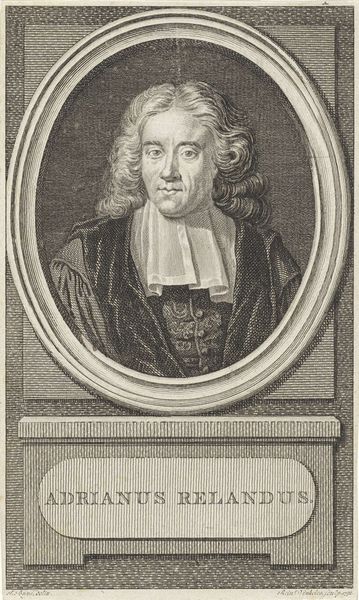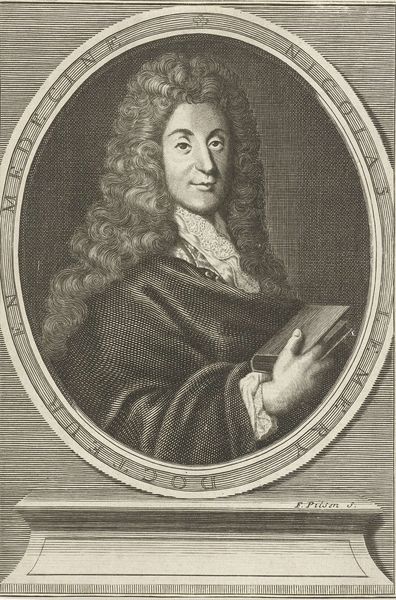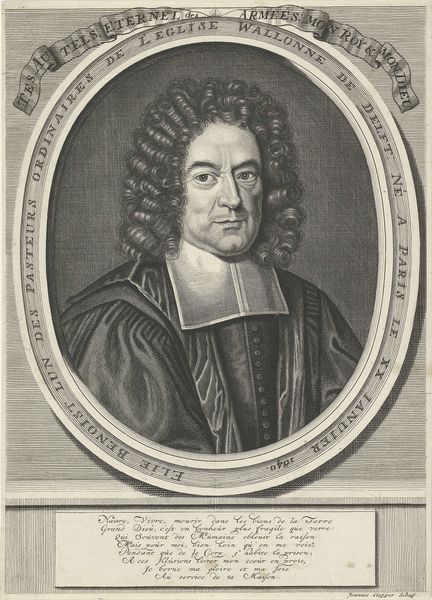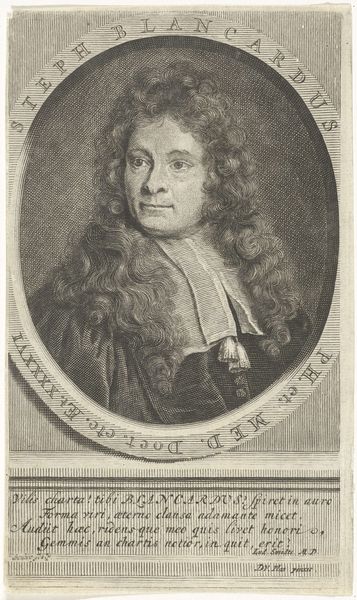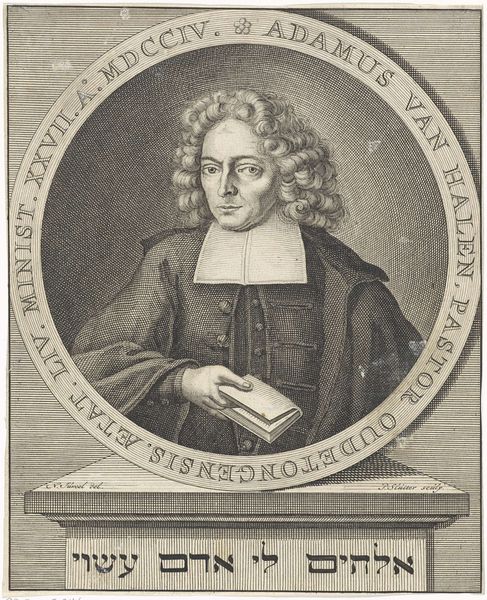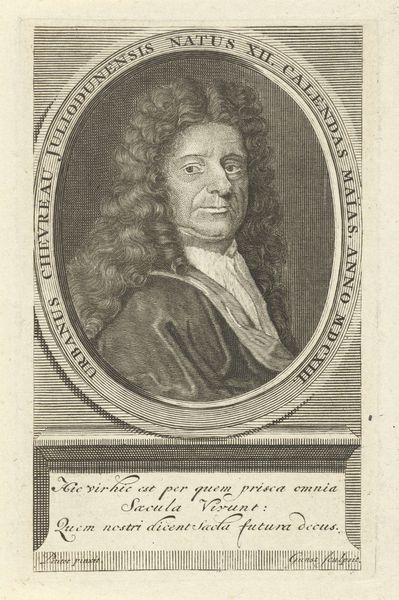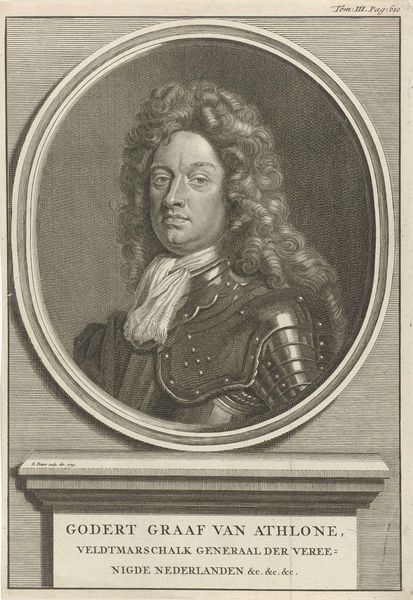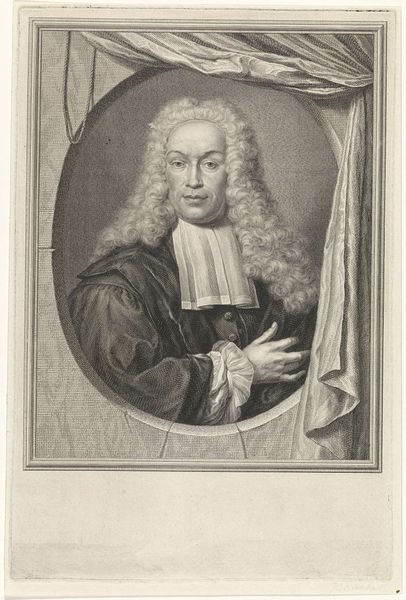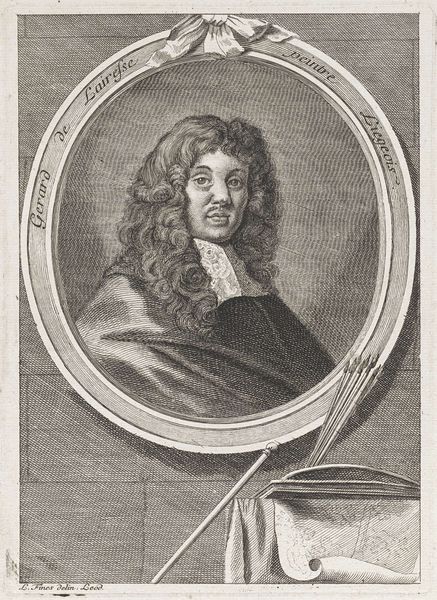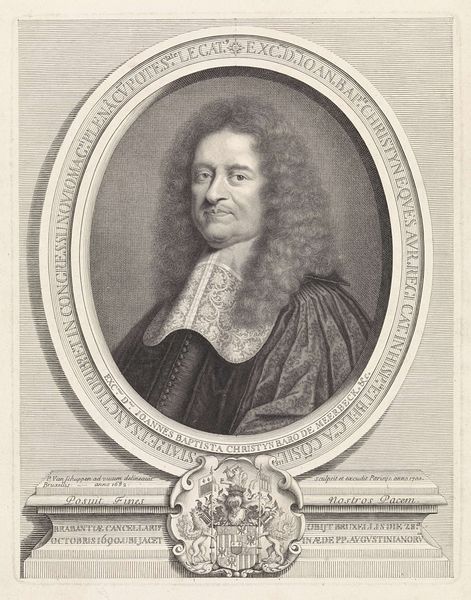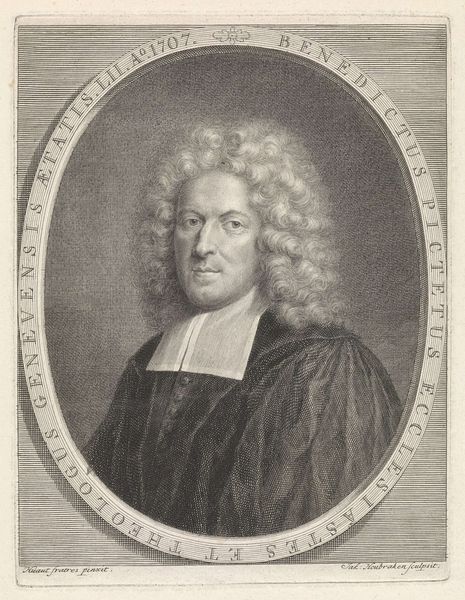
print, paper, graphite, engraving
#
portrait
#
neoclacissism
# print
#
old engraving style
#
figuration
#
paper
#
form
#
historical photography
#
19th century
#
line
#
graphite
#
history-painting
#
academic-art
#
engraving
#
realism
#
historical font
Dimensions: height 151 mm, width 89 mm
Copyright: Rijks Museum: Open Domain
Curator: The somber realism captured in this 1795 print, "Portret van Ludovicus Wolzogen" by Reinier Vinkeles, arrests my attention. The meticulous detail of the engraving lends a tangible quality to the subject's presence. Editor: It feels like a record of elite male authority during a period of significant social upheaval, doesn’t it? I am struck by how consciously Wolzogen is performing privilege through the conspicuous formality of dress. Curator: Certainly. Observe the line work—it is absolutely indicative of Neoclassical ideals. Consider how the artist uses hatching and cross-hatching to build tonal depth and the delicate rendering of the face. Look, too, at the frame within a frame, the ovoid form and its crisp delineation from the patterned backdrop. It isolates the subject, creating a focal point and commanding our gaze. Editor: Yet the very act of commissioning and circulating such a portrait spoke to power, even in an era defined by shifting social norms. How might Wolzogen’s portrait reflect his ties to powerful institutions of his day? Or the colonial legacies that bolstered European status? Curator: The piece exemplifies the technical skill so lauded during the late 18th century. Consider the gradations of light and shadow—the modulation across the features giving a powerful three-dimensionality despite being purely linear. Editor: But technical virtuosity is always harnessed in service of something, right? We’re left, as viewers, to grapple with how such images shape, or solidify, power dynamics. Curator: Absolutely, and the material qualities add a compelling aspect. Paper as the medium—so easily circulated, allowing the image and therefore, the portrayed ideal, to reach a wider audience. The formal choices reinforce an established visual rhetoric. Editor: Agreed. The print offers a complex, fascinating intersection—between artistic convention, elite power, and broader social dynamics, prompting vital inquiries about representation. It's an open door to questions about who gets remembered, and how.
Comments
No comments
Be the first to comment and join the conversation on the ultimate creative platform.
